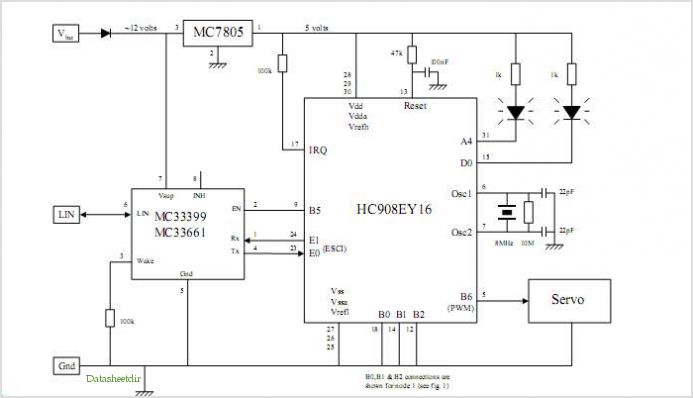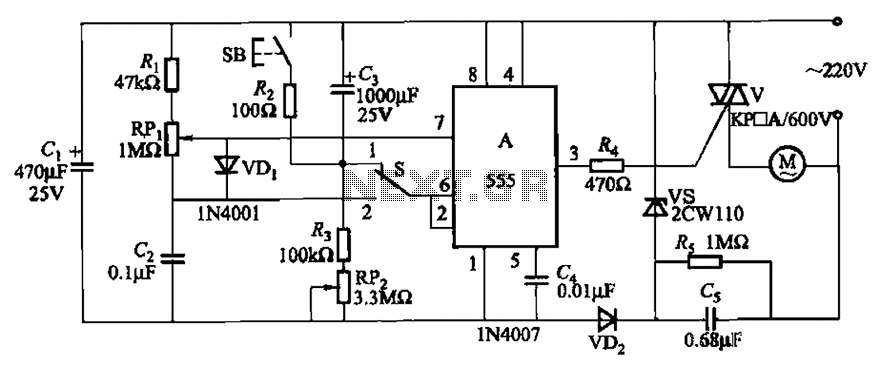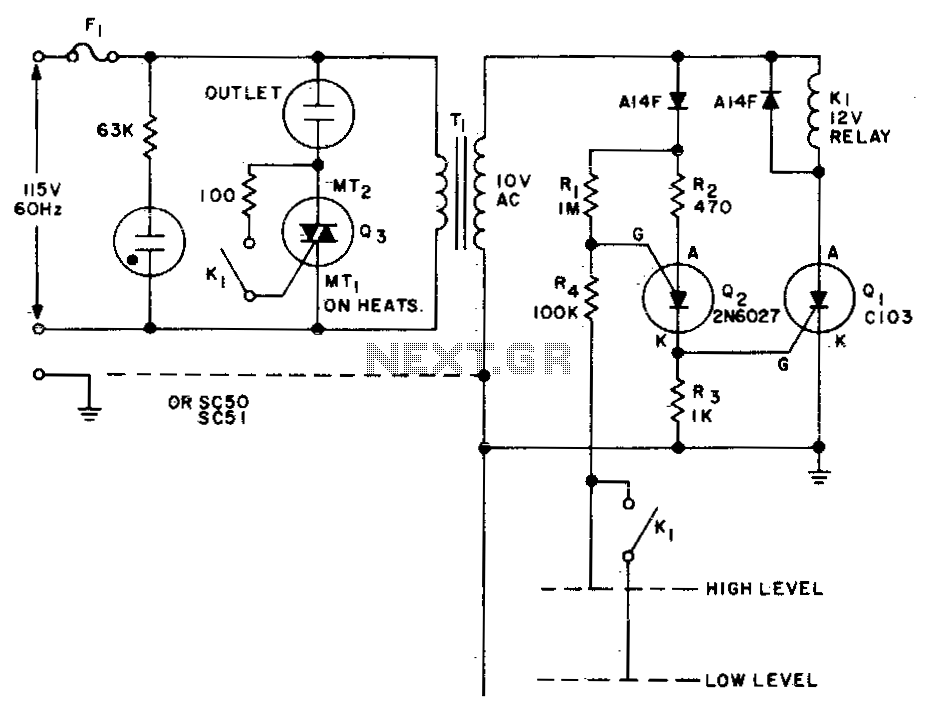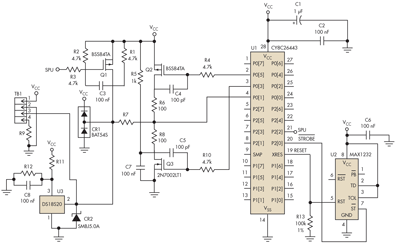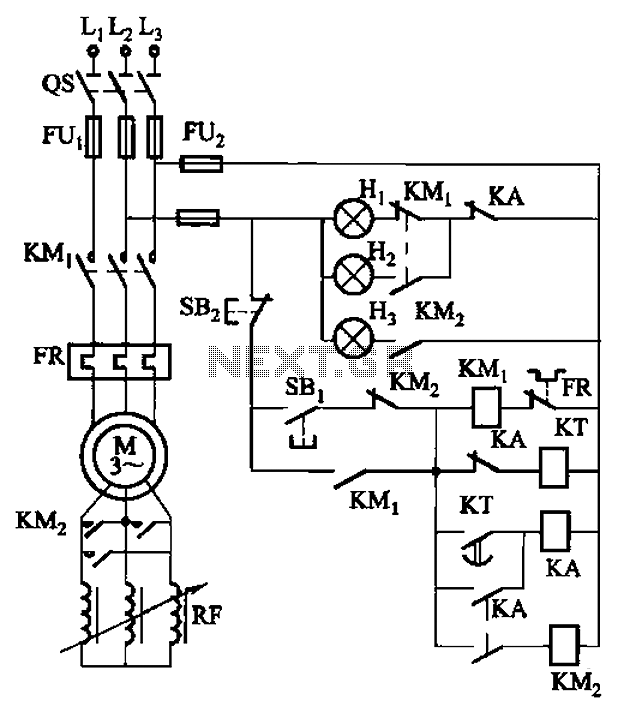
2Y- connection three two-speed motor contactor control circuits
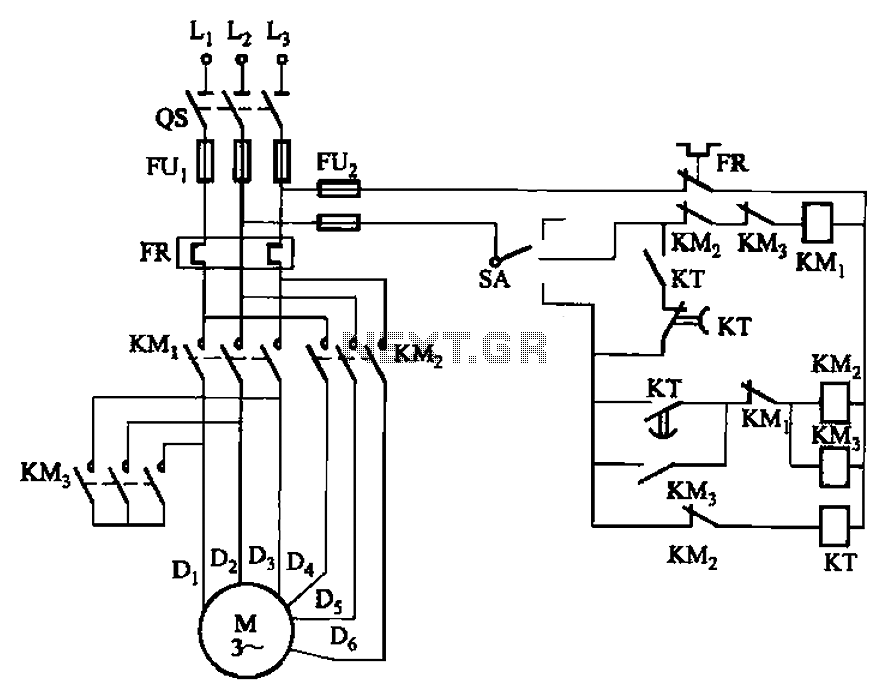
The circuit depicted in Figure 3-98 demonstrates how motor starting and low-speed operation are managed using switch SA. By adjusting the time relay KT, the motor's operation can transition from low speed to high-speed operation within a specified time interval.
The circuit employs a switch (SA) that allows the operator to control the motor's starting mechanism and its operational speed. When the switch is in the low-speed position, the motor operates at a reduced speed, which is particularly useful for applications requiring gradual acceleration or specific operational conditions that demand lower torque.
The time relay (KT) plays a crucial role in this circuit by providing a timed delay that facilitates the transition from low-speed operation to high-speed operation. When the switch is activated, the time relay initiates a countdown based on its preset time interval. Once this interval elapses, the relay activates, allowing the motor to receive full power and transition to high-speed operation.
This gradual increase in speed helps to protect the motor from sudden torque spikes, which can lead to mechanical stress and potential damage. Additionally, the use of a time relay allows for flexibility in adjusting the transition time, accommodating various operational needs and ensuring optimal performance of the motor in different scenarios.
Overall, this circuit design is effective for applications requiring controlled motor starting and speed regulation, enhancing both the longevity of the motor and the efficiency of the system it operates within. Circuit shown in Figure 3-98. Motor starting and low-speed operation is controlled by a switch SA. Adjust the time relay KT, the motor can be changed from low speed to start hi gh-speed operation time interval.
The circuit employs a switch (SA) that allows the operator to control the motor's starting mechanism and its operational speed. When the switch is in the low-speed position, the motor operates at a reduced speed, which is particularly useful for applications requiring gradual acceleration or specific operational conditions that demand lower torque.
The time relay (KT) plays a crucial role in this circuit by providing a timed delay that facilitates the transition from low-speed operation to high-speed operation. When the switch is activated, the time relay initiates a countdown based on its preset time interval. Once this interval elapses, the relay activates, allowing the motor to receive full power and transition to high-speed operation.
This gradual increase in speed helps to protect the motor from sudden torque spikes, which can lead to mechanical stress and potential damage. Additionally, the use of a time relay allows for flexibility in adjusting the transition time, accommodating various operational needs and ensuring optimal performance of the motor in different scenarios.
Overall, this circuit design is effective for applications requiring controlled motor starting and speed regulation, enhancing both the longevity of the motor and the efficiency of the system it operates within. Circuit shown in Figure 3-98. Motor starting and low-speed operation is controlled by a switch SA. Adjust the time relay KT, the motor can be changed from low speed to start hi gh-speed operation time interval.

